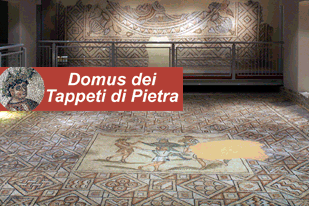Santa Maria Maddalena in central Ravenna.


Santa Maria Maddalena in central Ravenna. Hotels near Santa Maria Maddalena.
Photo: 1)facade of the church of S. Maria Maddalena, via Corrado Ricci, 2)Inside of the church
This delightful church has always been dear to the women of Ravenna, and was built in the period 1748-50 according to the design of a monk of the Camaldoli monastic order, Fausto Pellicciotti.
The smooth scrollwork of the facade that is completely in brickwork reflects the ability of the designer, who was also a skilled wood engraver who all undertook the wooden furnishings of the Classense bookcase (which is today the Aula magna of the library).
The single nave interior, although restricted in scale, contains a choir loft above the entrance together with numerous paintings of the late 18th century, all inspired by the figure of Mary Madeleine, except two altar pieces of the side altars by Andrea Barbiani.
He was one of the most active painters of the time in Ravenna, the last exponent of a family of artists active since the previous century. His brother Domenico, an interiors decorator and architect, collaborated in the design of the facade and the Baroque apse, embellished with precious marble and alabaster work.
The Conservatory of the Converted was also inspired by Santa Maria Madeleine, this being one of the institutions dedicated to female assistance works in Ravenna in the Papal era.
The other being the Conservatory of the Tavelle, which as from 1582 educated girls to become nurses giving free home assistance; and that of the Celibate that was set up by the Commune in 1661, for spinsters, widows or single women who dedicated their lives to helping the sick or socially useful work.
The Daughters of Providence or Pericolanti, who housed destitute orphans, as well as the Conservatory of Beggars, that was founded by the archbishop in 1701.
Finally the Conservatory of Female Orphans, also set up by the Bishops, which from 1593 housed orphans providing they were “healthy and pure in conduct.”
The Convertite, from the early 16th century housed women who lived on the streets, and young orphans later on, who were educated in weaving and female work.
On 22nd July 1772 the church was used to house the twenty orphans that were forcefully removed from the streets were they used to beg.
After a short ceremony in the presence of the archbishop, the girls were housed in a house rented from Count Ippolito Lovatelli and dressed in grey dresses with a white hat.
The original intention was to train them for a career, but due to the scarcity of funds and the difficulty in finding work, it was the archbishop himself who returned them to the streets to look for food and beg for money, this time with his blessing.
Ten years later the Casa della Misericordia (House of Mercy) was set up, which was a new orphanage which attempted to find a solution to the social problems of begging and destitution of minors.
Prof. Gianni Morelli, Anna Missiroli
The pleasure of fine accommodation in the centre of Ravenna: we recommend the Fabbri hotels for a pleasant stay as follows:
The Centrale Byron Hotel, 3-star hotel in the centre of Ravenna, close to the main momuments;
The Bisanzio Hotel, 4-star hotel in the centre of Ravenna, close to the main momuments;
Once you have reached the hotel and parked your car, forget it and walk everywhere, because everything is within walking distance.
© reserved copyright





